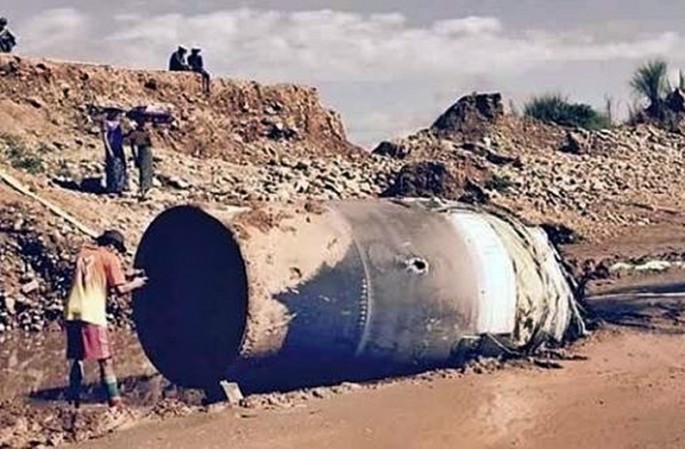Large parts of one of the upper stages of China's Long March-11 rocket launched Nov. 9, one of them with Chinese characters, crushed two houses in Myanmar but caused no casualties.
The largest piece of debris from the Chinese rocket, an empty cylindrical tube looking very much like one of the expendable upper stages of Long March-11, smashed into the tent of a jade miner living at a jade mining area in northern Myanmar's Kachin State, said state-run media.
The huge piece of rocket debris, which failed to burn-up or plunge into the Pacific Ocean, was 4.5 meters long and 1.2 meters wide.
Another chunk of the rocket, this with Chinese writing, destroyed the roof of a nearby house at about the same time.
The debris landed past 6:00 a.m. near the village of Lone Khin in mountainous Kachin State. The actual impact area was near an abandoned jade mine in Hpakant township.
The only rocket launched in Asia in November was the Long March-11 rocket carrying five satellites that blasted-off from the Jiuquan Satellite Launch Center in Chinese-occupied Mongolia on Nov. 9 at 23:42 UTC (about 6:00 a.m., Myanmar time).
Local residents said they heard a loud bang (probably a sonic boom) before pieces of the Chinese rocket smashed into the ground near them.
Officials from the local defense service said the larger piece bounced 50 meters into the air before landing in a muddy area of the mine.
"Experts are there checking it," said Kachin State government deputy director U Zaw Myo Nyunt to local media. "They also assumed that it was part of some aircraft or rocket."
"We were all afraid of that explosion," said villager Ko Maung Myo to Myanmar media.
"Initially, we thought it was a battle. The explosion made our houses shake. We saw the smoke from our village."
He said every local thought it was the explosion of heavy artillery.
Western experts said photos of the cylindrical shape of the object indicates it to be a part of a rocket stage.



























